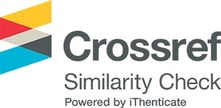Evaluasi Usability Aplikasi Zenly Menggunakan Metode Usability Testing
DOI:
https://doi.org/10.33020/saintekom.v13i2.399Keywords:
Evaluation, usability, questionnaire, SUS, testing, user experience, zenlyAbstract
The rapid development of applications has resulted in mobile application developers competing to create applications that are useful for the wider community, as is the case with the Zenly application. Through this application, every user can easily meet in real life, track the current whereabouts of someone with their consent, find the whereabouts of friends or relatives who are lost in the crowd, and follow the progress of the closest people. This research aims to determine the level of usability of the Zenly application and provide suggestions for improvement. The research stages followed a sequence of methods, including usability testing, preparation, execution, and analysis, time efficiency, and SEQ (Single Ease Question). Data was obtained on the average task time, success level, completion rate, and the lowest time efficiency, with task 1 taking 14,357 seconds, 38% success rate, two partial completions, and 87.5% completion rate. Based on the testing of these aspects and the results of the SUS (System Usability Testing) value of 71 Grade C (Good), the level of usability of the Zenly application is quite good but improvements need to be made, especially for task 1.
Downloads
References
Febrianto, W. A., & Putra, W. H. N. (2019). Aplikasi Sistem Informasi Puskesmas Paperless menggunakan Metode Usability Testing dan User Experience Questionnaire (UEQ) (Studi Kasus: Puskesmas Tarik). Jurnal Pengembangan Teknologi Informasi Dan Ilmu Komputer, 3(6), 6099–6106.
Kardbri, F. W., Suwawi, D. D. J., & ... (2021). Perancangan User Interface Fitur San Class Untuk Guru Pada Aplikasi Sanedu Menggunakan Metode Goal-directed Design. EProceedings …, 8(1), 836–851. https://openlibrarypublications.telkomuniversity.ac.id/index.php/engineering/article/download/14328/14112
Kusumawardhana, I. M. H., Wardani, N. H., Reza, A., & Perdanakusuma. (2019). Evaluasi Usability Pada Aplikasi BNI Mobile Banking Dengan Menggunakan Metode Usability Testing dan System Usability Scale (SUS). Jurnal Pengembangan Teknologi Informasi Dan Ilmu Komputer, 3(8), 7708–7716.
Muhammad Ismail Farouqi, Ismiarta Aknuranda, A. D. H. (2018). Evaluasi Usability pada Aplikasi Go-Jek Dengan Menggunakan Metode Pengujian Usability. Jurnal Pengembangan Teknologi Informasi Dan Ilmu Komputer, 2(9), 3110–3117.
Putri, A. S. N. A., Santoso, E., & Adi, T. N. (2021). Konstruksi Makna Media Sosial Zenly bagi Generasi Z. JOMIK: Jurnal Online Mahasiswa Ilmu Komunikasi, 1023, 30–39.
Sukarsa, I. M., Buana, P. W., Juliarta, I. P., Utama, A., & Wisswani, N. W. (2022). Meningkatkan User Experience Menggunakan Metode Usability Testing ( Studi Kasus?: Aplikasi Warga Bali ) Usability Evaluation Dan User Interace Improvement To Increase User Experience Using Usability Testing Methods ( Case Study?: Warga Bali Apps ). 9(5), 1003–1010. https://doi.org/10.25126/jtiik.202295408
Vi Yanti Siahaan, O., C. Damanik, F., Jaya Zebua, C., N.S. Damanik, F., & Jurnalis Pipin, S. (2022). Evaluasi Usability pada Aplikasi PeduliLindungi Menggunakan Metode Usability Testing. Jurnal SIFO Mikroskil, 23(2), 209–224. https://doi.org/10.55601/jsm.v23i2.901
Wahyuningrum, T., Kartiko, C., & Wardhana, A. C. (2020). Exploring e-Commerce Usability by Heuristic Evaluation as a Compelement of System Usability Scale. 2020 International Conference on Advancement in Data Science, E-Learning and Information Systems, ICADEIS 2020, 1–5. https://doi.org/10.1109/ICADEIS49811.2020.9277343
Wardhana, A. C., Fani, T., Adila, N., & Raharjo, K. P. (2020). Perancangan Aplikasi Antrean Online Pemeriksaan Ibu Hamil Menggunakan User Experience Lifecycle. Jurnal Media Informatika Budidarma, 4(1998), 1016–1023. https://doi.org/10.30865/mib.v4i4.2338
Yuliyana, T., Arthana, I. K. R., & Agustini, K. (2019). Usability Testing pada Aplikasi POTWIS. JST (Jurnal Sains Dan Teknologi), 8(1), 12–22. https://doi.org/10.23887/jst-undiksha.v8i1.12081
Downloads
Published
How to Cite
Issue
Section
License
Copyright (c) 2023 Naseh Hibban, Rafi Albaihaqi, Dito Bakhtiar Rifai, Hasby Aiman

This work is licensed under a Creative Commons Attribution-ShareAlike 4.0 International License.
Copyright :
By submitting manuscripts to Jurnal Saintekom : Sains, Teknologi, Komputer dan Manajemen, the author agrees with this policy. No specific document approval is required.
- The copyright in each article belongs to the author.
- Authors retain all their rights to the published work, not limited to the rights set forth in this page.
- Authors acknowledge that Saintekom Journal: Science, Technology, Computers and Management as the first to publish under the Creative Commons Attribution 4.0 International license (CC BY-SA).
- The author may submit the paper separately, arrange for non-exclusive distribution of the manuscript that has been published in this journal into other versions (e.g. sent to the author's institutional respository, publication into a book, etc.), by acknowledging that the manuscript has been first published Jurnal Saintekom : Sains, Teknologi, Komputer dan Manajemen;
- The author warrants that the article is original, written by the named author, has not been previously published, contains no unlawful statements, does not infringe the rights of others, is subject to copyright exclusively held by the author.
- If the article is jointly prepared by more than one author, each author submitting the manuscript warrants that he or she has been authorized by all co-authors to agree to copyright and license notices (agreements) on their behalf, and agrees to inform co-authors of the terms of this policy. Jurnal Saintekom : Sains, Teknologi, Komputer dan Manajemen will not be held liable for anything that may arise due to internal author disputes.
Lisensi :
Jurnal Saintekom : Sains, Teknologi, Komputer dan Manajemen is published under the terms of the Creative Commons Attribution 4.0 International License (CC BY-SA). This license permits anyone to:.
- Share - copy and redistribute this material in any form or format;
- Adaptation - modify, alter, and create derivatives of this material for any purpose.
- Attribution - you must give appropriate credit, include a link to the license, and state that changes have been made. You may do this in any appropriate manner, but it does not imply that the licensor endorses you or your use.
- Similar Sharing - If you modify, alter, or create a derivative of this material, you must distribute your contribution under the same license as the original material.







